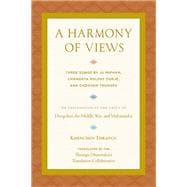Three songs by recognized masters of different Tibetan Buddhist traditions illustrate what their views have in common--with commentary by Thrangu Rinpoche and songs by Ju Mipham, Changkya Rolpay Dorje, and Chögyam Trungpa.
Do different Tibetan Buddhist traditions share an essential, common view?
The great Geluk scholar Changkya Rolpay Dorje (1717-1786) wrote a song describing the view of the Middle Way, comparing it to a mother. Later, the nonsectarian polymath Ju Mipham Rinpoche (1846-1912) and the influential Kagyu master Chögyam Trungpa Rinpoche (1939-1987) wrote songs modeled upon it that describe the views of dzogchen and mahamudra, one comparing dzogchen to a jewel and the other comparing mahamudra to a lover. Even though the imagery and the specific points each author makes are different, the songs share many characteristics in structure and content. Read together, the three songs show how the essential points of these three practices are the same and reveal how Buddhism's various traditions--including the pinnacles of the Middle Way, dzogchen, and mahamudra--are harmonious.
The three songs are presented with a commentary by Khenchen Thrangu Rinpoche, who explains how studying the profound view helps develop the certainty that is necessary to bring meditation practice to fruition. He shows how songs such as these can serve as antidotes to discouragement and provide help to people who have had strong meditation experiences but find themselves unable to sustain a high level of practice. Thrangu Rinpoche explains that, in comparison to oral instructions and treatises, songs of this kind are of special benefit because of their engaging eloquence. The songs are not long, and they are a delight to read, reread, and memorize. By clarifying the view again and again in this way, they offer continual inspiration to practitioners.








